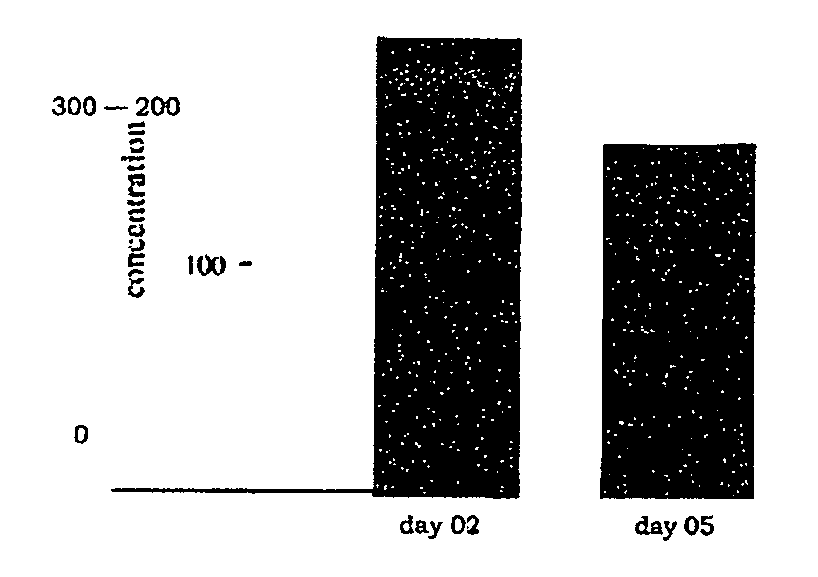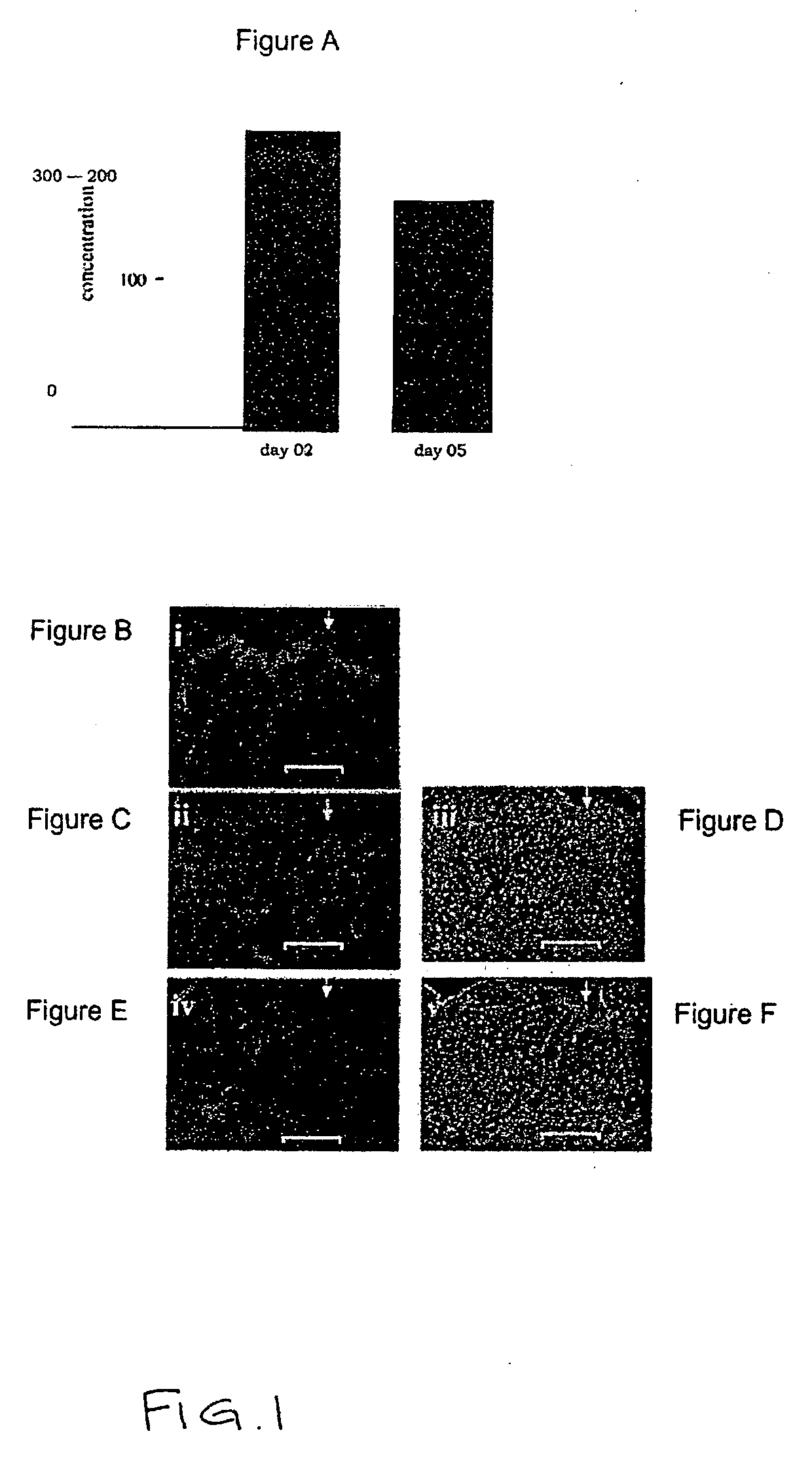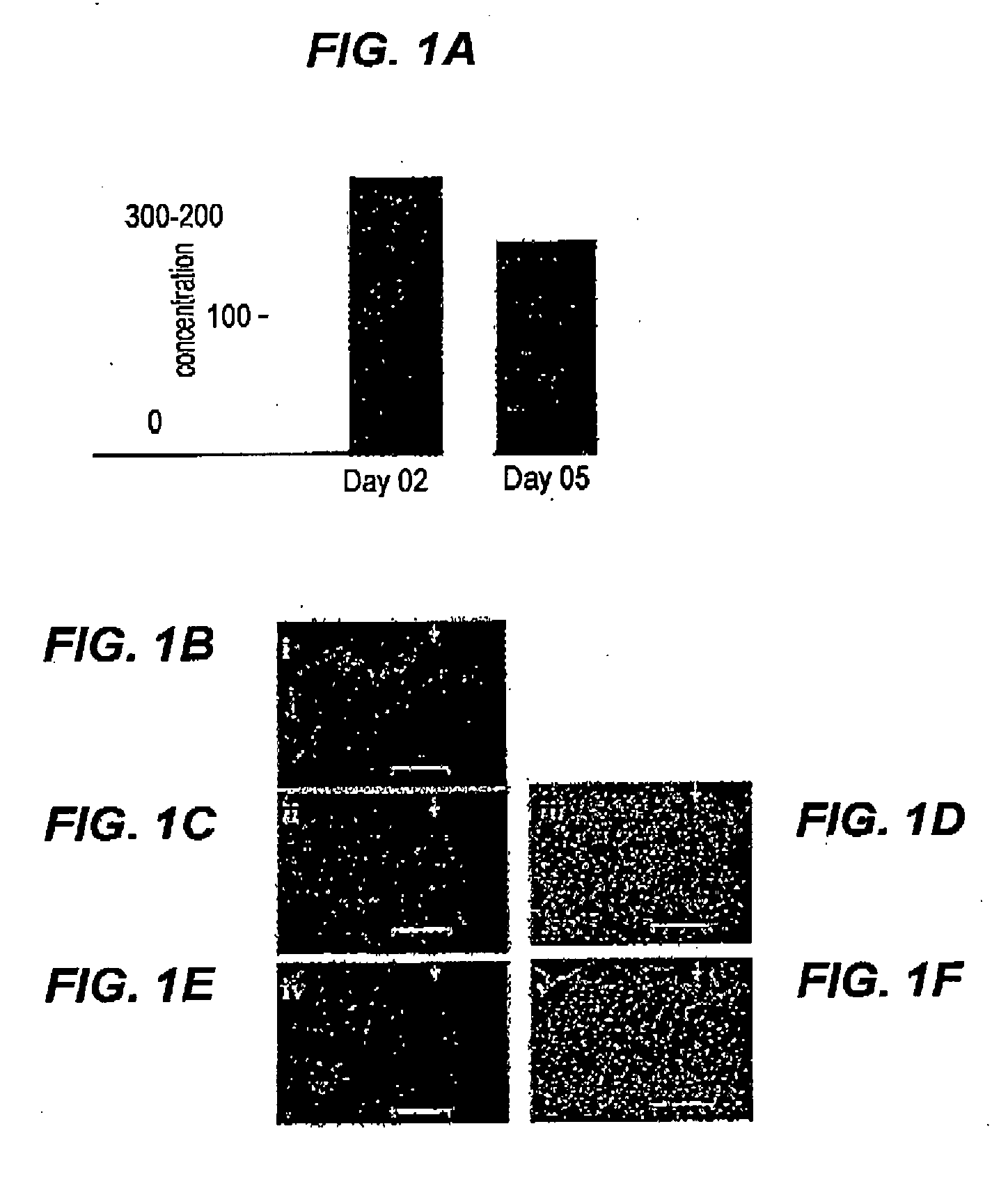Nutraceutical treatments for diabetic and non-diabetic wound healing
- Summary
- Abstract
- Description
- Claims
- Application Information
AI Technical Summary
Benefits of technology
Problems solved by technology
Method used
Image
Examples
example 1
[0087] Wound healing is impaired in type I diabetic mice. To determine the effect of the compostions described herein on wound healing in diabetic mammals, two full-thickness excisional wounds were placed on the dorsal skin of diabetic NOD / LtJ mice and matched control non-obese non-diabetic NOR / LtJ mice (12-15 wks, 5×10 mm wounds).
[0088] Results are shown in FIG. 1A. Wound area is shown as % of area of initial wound. Data are shown as mean±SD (n=4)*, p<0.05 versus corresponding non-diabetic control mice. As shown in FIG. 1B-FIG. 1C, histological analyses using hematoxylin and eosin staining of the wounds on day 3, post wounding, clearly demonstrated increased cellularity in NOD wounds versus NOR wounds (Scale bar=100 μm).
[0089] To visualize dead cells in the wound tissue, deoxynucleotidyl transferase-mediated dUTP nick end labeling (TUNEL) staining was optimized. Stained images show (FIG. 1D) a positive control that was generated by treating the tissue section treated with protein...
PUM
| Property | Measurement | Unit |
|---|---|---|
| Fraction | aaaaa | aaaaa |
| Fraction | aaaaa | aaaaa |
| Mass | aaaaa | aaaaa |
Abstract
Description
Claims
Application Information
 Login to View More
Login to View More - R&D
- Intellectual Property
- Life Sciences
- Materials
- Tech Scout
- Unparalleled Data Quality
- Higher Quality Content
- 60% Fewer Hallucinations
Browse by: Latest US Patents, China's latest patents, Technical Efficacy Thesaurus, Application Domain, Technology Topic, Popular Technical Reports.
© 2025 PatSnap. All rights reserved.Legal|Privacy policy|Modern Slavery Act Transparency Statement|Sitemap|About US| Contact US: help@patsnap.com



